Book Review: Liam Lynch, To Declare a Republic
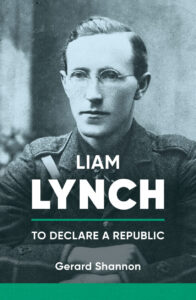 By Gerard Shannon
By Gerard Shannon
Published by Merrion Press, 2023
Reviewer: John Dorney
ISBN: 9781788558211
Price: E19.99
One hundred years ago this April (2023) a band of fugitives fled up a hillside in the Knockmealdown mountains, escaping pursuing National Army troops. Though they had fired some shots with handguns, they were badly outgunned by the military with their rifles. A shot rang out and one of the men fell. One of the soldiers who found him, badly wounded in the stomach, thought he was Eamon de Valera, but he was in fact the anti-Treaty IRA Chief of Staff, Liam Lynch.
Lynch’s agonising death, some hours later in Clonmel, effectively ended the Irish Civil War. Lynch’s successor Frank Aiken, reversed the former’s obdurate insistence that the war would continue until republican victory and called a ceasefire within weeks.
Liam Lynch, as result of the course he took in his last months, is mainly remembered either as the republican hero, who would rather die than surrender, or alternately as a delusional fanatic, who needlessly prolonged the internecine bloodshed of 1922-1923.
A rounded picture
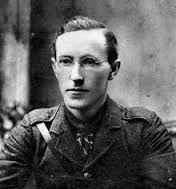
Gerard Shannon’s timely new biography of Lynch, only the third, provides a more rounded picture than either of these caricatures. Based on very extensive archive research as well as Lynch personal papers, such as his correspondence with his brother Tom, a more human Liam Lynch emerges.
The Liam Lynch we meet is not the charismatic ‘general Liam Lynch’ of lore, but rather a ‘shy bookish’ young man (he was only 30 when died), certainly dashing and committed to his cause at times, but at others woefully indecisive and politically naïve.
The Lynch that Shannon depicts is not politically sophisticated. Though sometimes superciliously dismissed as an ‘assistant shop-clerk’, this was in truth an apprenticeship which could ultimately have seen him take over the business himself. He was part of the emerging Catholic lower middle class, was well educated by the standards of the day and was a voracious reader of Irish and military history.
He was influenced by the milieu in which he grew up, of the story of the fight for Irish freedom, via the Fenians and the Land League, in which his family had played a part on the Limerick-Cork border. But he was a Hibernian and a National (Redmondite) Volunteer -two organisations associated with the Home Rule party – rather than a republican separatist in his youth. That is, before watching the Kents of Fermoy being shot and arrested for their role in the 1916 Rising.
His ‘conversion’ to republicanism thereafter appears to have consisted mainly of commitment to physical force methods of the Irish Volunteers, or as they became from 1919, the Irish Republican Army. He had, in Shannon’s reading, no interest in labour or left-wing politics, or even the organisation of Sinn Fein, which he envisaged as being best deployed simply as an auxiliary to the guerrilla Army. Though he rose through the ranks of the IRA, he never showed any interest in standing for election, unlike many of his comrades.
He also, perhaps never quite shed his background as a Hibernian, the Catholic-only nationalist organisation, led in this era by Joe Devlin. Shannon reports that Lynch expressed his discomfort that his relatives were buried among ‘alien people’ in a Protestant graveyard. And as IRA commander he later advocated wholesale reprisals against loyalists in retaliation for the execution of IRA Volunteers, both during the War of Independence and the Civil War. While he was restrained from reprisal killing of civilian loyalists and ‘imperialists’ in large numbers, he did in both 1921 and 1922-23, order a wholesale campaign of burning their houses.
This is an ugly aspect of Lynch’s character, that Shannon does not gloss over, though treatment of the 1922-23 house burning campaign, is sadly mostly absent from the final chapters of the book.
I would argue that Lynch, as IRA Chief of Staff in 1922-23 showed somewhat more political nous than he is portrayed with here. He was alive to the possibility of using land and, to a lesser extent labour, discontent to build popular support. However there is no doubt that he understood his position mainly in a military sense and the end goal as the Irish Republic, meaning simply the independence of all of Ireland from Britain.
IRA commander
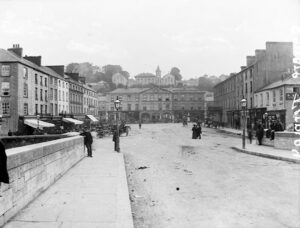
His rise in the IRA was occasioned, not by political ideas or activism, but rather by his fierce commitment to the cause and especially three spectacular raids in 1919-20 – in Fermoy, where he led a party that disarmed a British Army company, the kidnap of a British General, Lucas and a raid on a military depot at Mallow in 1920 with Ernie O’Malley in which they cleaned out the military barrack’s armoury.
These early successes led to him being ‘talent spotted’ by IRA GHQ in Dublin, led by Michael Collins and Richard Mulcahy, and Lynch rose to Brigade commander in North Cork and later to commander of the whole First Southern Division. Indeed, he is credited by Shannon with being the inspiration behind the IRA Divisions, created in 1921 as a means of creating autonomous fighting formations should the leadership in Dublin be neutralised.
Ernie O’Malley perhaps the archetypal nomadic guerrilla officer, complained after his promotion to Divisional responsibility, that he was now simply a ‘paper pusher’. His time in his mountain dugout was spent filling and receiving endless reports and instructions rather than the raids and ambushes that he yearned for. The role of Liam Lynch in the IRA of 1921 seems to have been the same, more of an administrator than a field commander.
But Lynch was an able staff officer and administrator, qualities just as necessary, even in a guerrilla army, as actual fighters.
One of the many ironies of Lynch’s subsequent career was that he became part of the inner circle of the IRA leadership under Collins and Mulcahy and, moreover, also a senior member of the Irish Republican Brotherhood Supreme Council, by which Collins exercised substantial secret control over the political and military movement. So trusted was Lynch, we learn in Gerard Shannon’s book, that Collins even briefed him secretly during the negotiation of the Anglo-Irish Treaty about the compromises that would be necessary.
It might therefore seem extraordinary that Lynch died and will forever be remembered, as a diehard opponent of that Treaty.
Treaty Split
In truth for this reviewer at least, Lynch’s position was difficult to make sense of. He had acknowledged in December 1921 that the Treaty ‘was not without its good points’, that ultimately it was ‘humiliating’ for the British Empire and that the new Irish Free State’s membership of the British Empire was likely to be temporary. This was classic ‘stepping-stone republicanism’ as articulated by Michael Collins, yet Lynch felt unable to support the Treaty.
This seems largely to have been the result of his comrades in the IRA Southern Divisions coming out against it. Shannon reports Lynch breaking down in tears at a meeting of IRA commanders and some participants at the meeting being unable to work out whether he was arguing for the acceptance or rejection of the Treaty. In a communication with Richard Mulcahy, Lynch voiced the view that it was ‘too humiliating’ for republicans to enter the British Empire ‘even for a short time’ and was impossible to explain to the families and comrades of those who had died in the struggle.
The kernel of Lynch’s position appears to have been to promote a compromise in which the Treaty could be accepted but only if the Oath of Fidelity to the British monarch was deleted. He was greatly dismayed at the prospect of fighting between pro and anti-Treaty factions breaking out, as it nearly did in Limerick city in March 1922. This position appears to be similar to that of Eamon de Valera who advocated a revision of the Treaty in his ‘Document Number Two’.But Lynch, who was elected Chief of Staff of the anti-Treaty IRA, rejected de Valera’s formula out of hand. It was, he insisted, the Republic or nothing.
At the same time, the hardliners in the anti-Treaty ranks, including those who occupied the Four Courts in Dublin in April 1922, decried Lynch and especially his participation in efforts to re-unite the pro and anti-Treaty elements of the Army, as a mealy-mouthed compromise.
Lynch’s attitude to the North and to partition is not explored in great depth here, but Shannon duly records the participation of Lynch in planning the debacle of the ‘joint Northern offensive’ in May 1922 which was meant to restore unity and undermine the new Northern Ireland government but failed to do either.
Shannon is more sympathetic than this reviewer to Lynch with regard to the Treaty split. He emerges here in my reading, not as the anti-democrat or fanatical militarist of hostile depiction, contemptuous of the ‘will of the people’, but rather as an indecisive man without long term strategic vision, far too easily swayed by peer pressure among his IRA comrades and unable to see the likely consequences of his actions.
Civil War
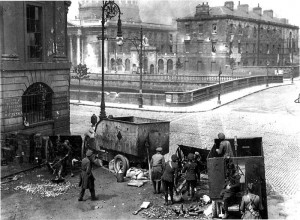
Even after the Civil War broke out, despite Lynch’s efforts, with the bombardment of the Four Courts, Lynch initially tried, once again, to patch things up.
He was arrested in Dublin by the pro-Treatyites but released and detained again, we learn through Shannon, by pro-Treaty troops in Kilkenny, where he may or may not have given an undertaking not to get involved in the fighting, before arriving in Limerick city where he arranged a local truce. It was only after this was broken by Free State forces that Lynch began his involvement in the Civil War in earnest.
Again, while attempts to avoid Civil War may be laudable, Lynch was indecisive at the crucial moment, surrendering the initiative to his opponents. Thereafter though, believing that republican forces had been attacked without provocation by the ‘Free Staters’, Lynch became determined to prosecute the Civil War to the end.
Perhaps the strongest part of the book is Shannon’s description of Lynch’s tortuous relationship with Eamon de Valera, in theory the political head of the republican movement, but who Shannon shows, Lynch consistently refused to listen to. Indeed, by the end of the Civil War, he was, we learn, no longer even deigning to send him reports. De Valera in private repeatedly urged an end to the fighting and a return to political methods and when this failed, at least to restrain Lynch’s more drastic reprisal orders in response to Free State executions, but, mostly, in vain.
Lynch again veered from leniency (pro-Treaty prisoners, he initially ordered, were to be well treated and then released) to exceptional harshness after the Free State introduced executions. All Free State TDs were now to be shot; their civilian supporters’ houses burned down. That IRA units on the ground managed to kill only one member of the Third Dail was no thanks to Lynch.
However, Shannon pushes back against the depiction of Lynch as IRA Chief of Staff as unrealistic or even delusional. While not blind to his, flaws, – Lynch was, he writes, better as a local brigade commander than overall head of the organisation – he was, Shannon writes, fully cognisant of the deteriorating conditions under which the republican guerrillas operated.
Lynch’s public pronouncements of ‘splendid operations’ and ‘certain victory’ were for public, or at least for rank-and-file consumption. In private, we learn, especially to his bother Tom, a priest, Lynch was acutely aware of how difficult and tragic the intra-nationalist war was. “How could all our hopes have been so blighted?” he wrote to his brother.
Moreover, Lynch did have a politico-military strategy, which was to wear down the Free State’s military and even more important, its organs of government through a prolonged guerrilla war, which would eventually end in British intervention and renegotiation of the Treaty. No matter how badly things were going in terms of death and arrests of anti-Treaty personnel, therefore, ‘time is on our side’, Lynch thought.
Shannon discusses Lynch’s attempt to import light mountain artillery from Germany as key to his thinking of how the war could be won, though in this reviewer’s reading of Lynch’s correspondence (for my own book The Civil War in Dublin) the idea of bankrupting the Free State and ‘preventing a single government department from functioning’ were much more important and realistic elements in his strategy.
Death
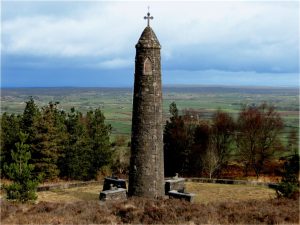
Shannon’s account of Lynch’s death is fullest and most full of pathos yet committed to print. On the one hand, the National Army operation on the ground was incompetent to the point of comedy, on the other, the death of Lynch is marked by deep tragedy.
The Army knew that IRA Executive was in the area but the captain in charge of the sweep, one Captain Taylor, had got drunk and had to be whipped with a belt by his superior before he took his troops into the hills. The pro-Treaty troops only noticed the fleeing anti-Treaty leadership when they unwisely opened fire on them with their sidearms. Lynch was hit by a rifle bullet fired from long range that passed right through his abdomen.
The officer who actually came across the wounded Lynch we learn, was Lieutenant Clancy, an ex-IRA man himself from Co. Tipperary, who had lost two brothers in the struggle against the British. He stopped the troops from finishing Lynch off and got him whatever medical care was available. It turned out that both had known Michael Fitzgerald, a close comrade of Lynch’s who had died on hunger strike in 1920. ‘All this is a pity’, Clancy recorded Lynch as saying, ‘it should never have happened, poor Ireland, poor Ireland’.
The reader cannot help but agree with Lynch’s dying words – it should indeed never have happened this way – but also to reflect on the latter’s own role in ensuring that the Civil War could only, inevitably, end with his own death or capture. In this respect, the Liam Lynch of ‘To Declare Republic’ is a tragic figure, sucked into a tragic end by his own actions, no matter how hard he tried to avoid it.
Gerard Shannon’s biography is the first full length biography of Lynch to take advantage of the wealth of sources we now have about the Irish revolution and the result is a satisfyingly human portrayal of a man normally either demonised or mythologised in Irish history.
If you enjoy the Irish Story and wish to support our work, please consider contributing at our Patreon page here.